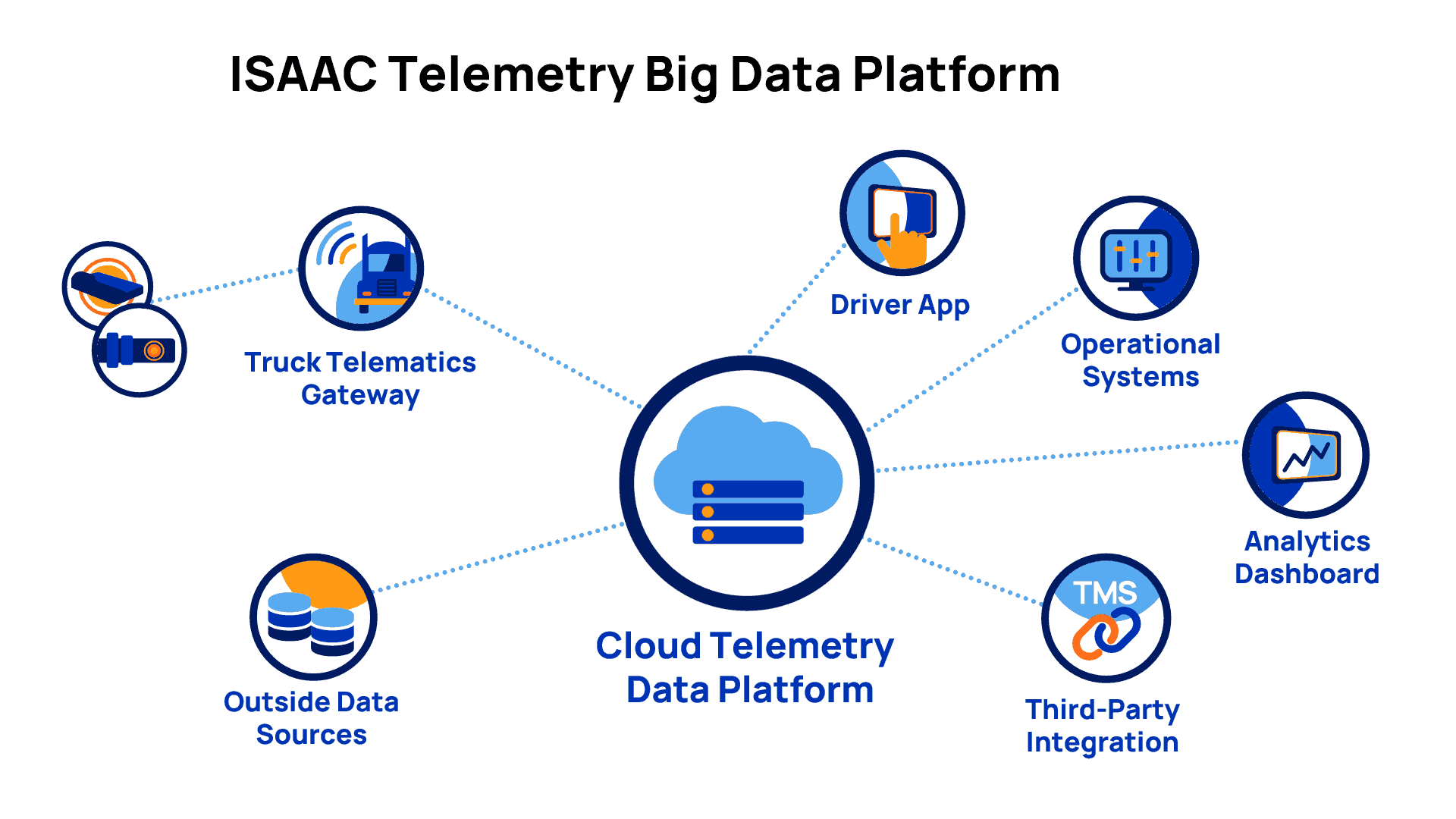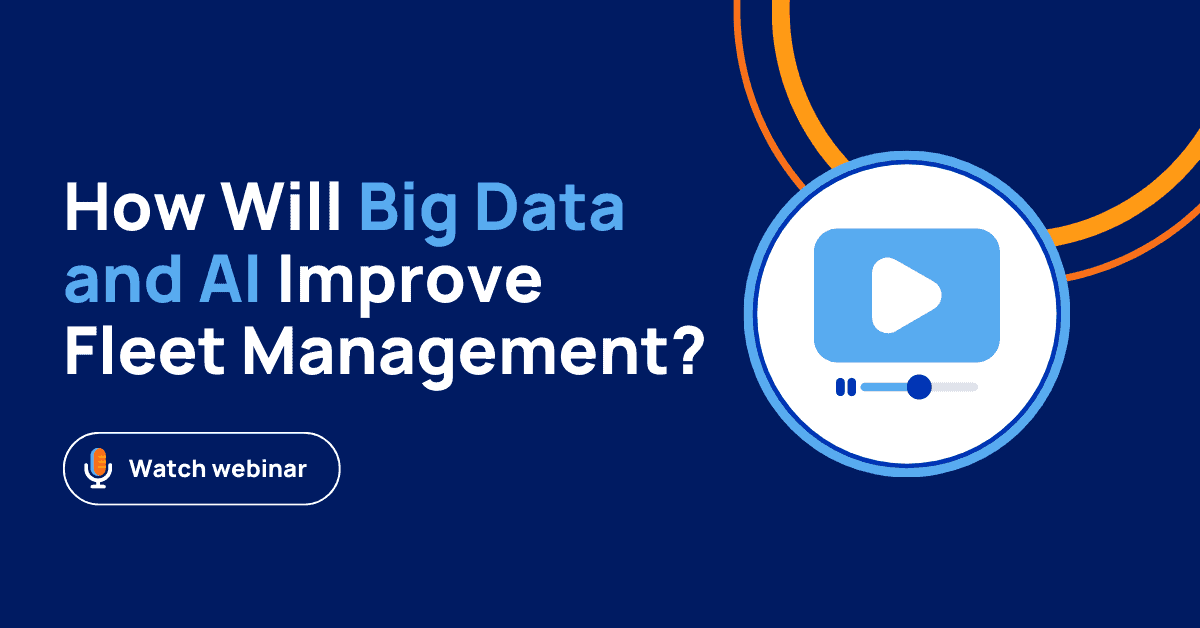Telematics has been part of trucking for years, with expansive growth following the wide implementation of government-mandated ELDs in the 2010s.
When we call telematics information “big data”, it’s not an exaggeration.
A top-notch telematics system knows exactly where every truck and driver currently is and where they’ve been; the location and status of every load. It maps routes for efficiency and tracks maintenance information like tire retorquing status, and essential regulatory data like hours of service.
How can this much information be managed in a way that’s useful and effective? ISAAC uses 5 V’s as its metric to know if our solution is delivering everything it should.
The 5 V’s you must consider
If you’re looking at a telematics system, consider:
- Volume : is the system gathering all the information you need in sufficient quantity?
- Velocity : are you getting that information in a timely way?
- Variety : are multiple information types being gathered?
- Veracity : is the information reliable?
- Value : is the system delivering something you can use and providing a solid ROI?
Big data takes big resources
Unlike a spreadsheet running on a single PC in a warehouse, a telematics solution operates across the cloud. It has to—the sheer volume and variety of what a top telematics solution gathers, across fleets of hundreds of trucks, exceeds what a single computer can handle.
Distributed computing across the cloud is more efficient overall, keeping costs reasonable and speeds high compared to single-point platforms on a company’s premises. A telematics platform is an enterprise-scaled cloud solution to pull information from trucks, as well as third-party data sources, into its servers to be processed and delivered back to clients as actionable information.
This diagram shows how information flows through a telemetry platform, drawing information from trucks and other systems to redeliver it in ways that let drivers and fleet managers make strong and informed decisions:

The 5 V’s in concrete terms
To carry the benefits of big data, a telematics platform must collect a sizable volume of data; ISAAC collects over 200 terabytes per year of clean and processed operational and telemetry data.
The velocity or rate at which data is received is a determining factor, with ISAAC ingesting over 10,000 records per second into its platform.
Collecting both structured and unstructured data, systems must gather a variety of information to provide as much decision-making power as possible to its clients.
Each piece of information brought into the system must be maintained and monitored for quality and fidelity over time, to ensure the veracity of stored data is unimpeachable.
All elements just described, in aggregate, mean value for carriers, with the ability to make better decisions faster thanks to the information constantly delivered to their fleet managers and other key decision-makers.
Capitalizing on your big data telematics solution
The benefits of big data don’t rest solely on having the right technology. System users need to be well trained and supported in leveraging the new information available to them—that is, if carriers wish to maximize their ROI from this step-change upgrade.
Choosing and implementing a big data telematics system should be approached diligently—ideally with a provider acting as a technology partner and providing ongoing support for successfully using your powerful big data platform, after you’ve installed it.
Ultimately, choosing a telematics system based on the 5 V’s should also provide a bonus ‘V’, validation: confirming you’ve made the right choice with every sound decision you make, thanks to the valuable information your big data telematics platform delivers.
Watch webinar: How Will Big Data and AI Improve Fleet Management?
About the authors

Rahat Yasir, M.Sc.
Director of Data Science – AI ML, ISAAC Instruments
Rahat Yasir is Director of Data Science – AI ML at ISAAC. He leads all initiatives for building a data-driven and AI-powered transportation industry. He was selected as Canada’s top 30 software developer under 30 in 2018. He is an eight-time Microsoft Most Valuable Professional Award holder in the Artificial Intelligence category. He has years of experience in imaging and data analysis application development, cross-platform technologies and enterprise system designing. He is the author of multiple software engineering books and a number of research publications in the data science domain.

Azrul Danial Mohamad
Software Architect (Cloud), ISAAC Instruments
Azrul Danial Mohamad is a Cloud Architect at ISAAC with 8 years of professional experience in IT and Cloud Design and Architecture. As part of ISAAC’s Data and AI team, his primary responsibility is to create and oversee solution architectures of the ISAAC Big Data and AI Platform, to ensure scalability, security, and cost effectiveness. His passion lies in developing meaningful and right-fit solutions to help drive businesses forward and keep the wheels turning for our clients.


